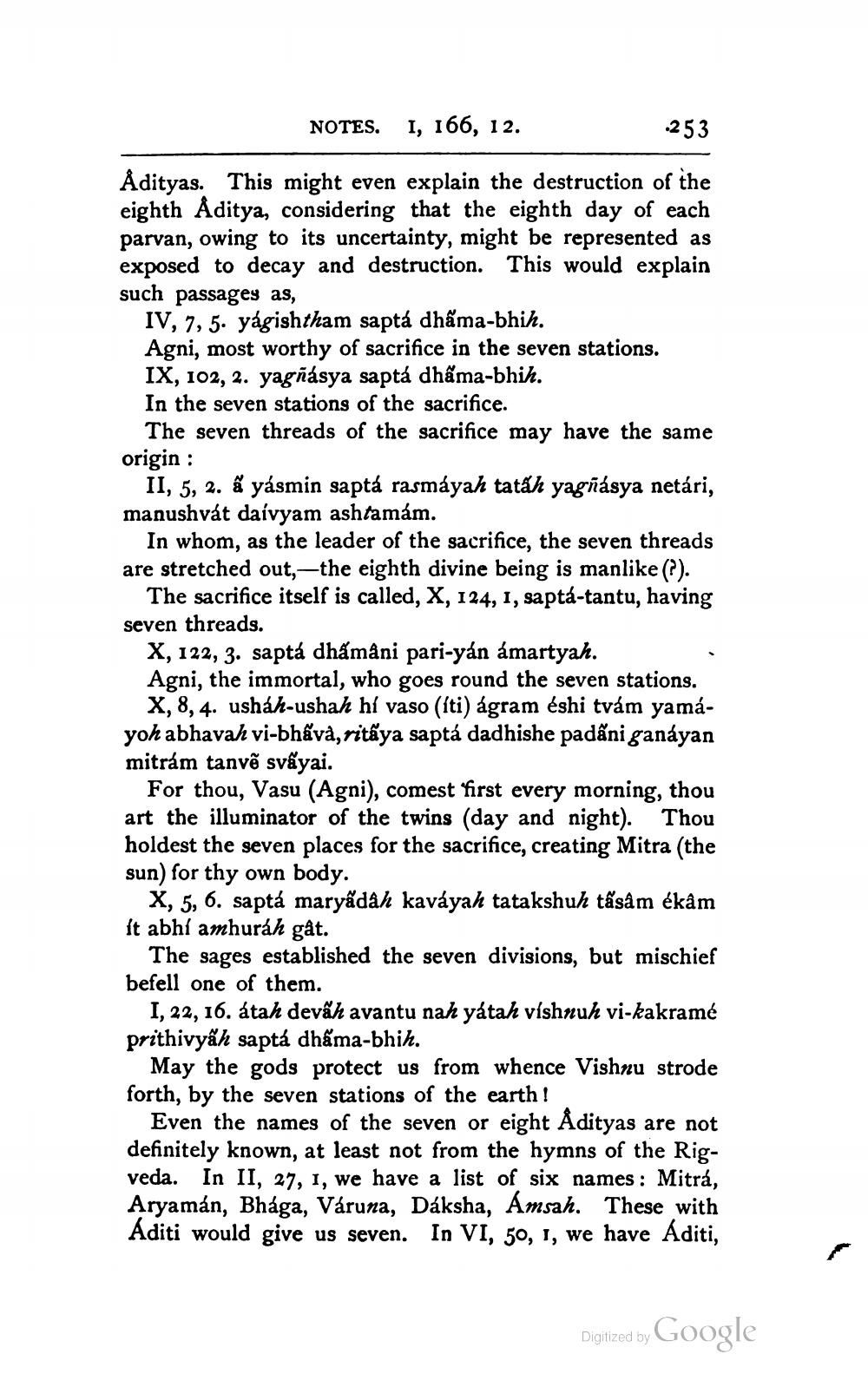________________
NOTES. I, 166, 12.
253
Ådityas. This might even explain the destruction of the eighth Aditya, considering that the eighth day of each parvan, owing to its uncertainty, might be represented as exposed to decay and destruction. This would explain such passages as,
IV, 7, 5. yagishtham saptá dhấma-bhih. Agni, most worthy of sacrifice in the seven stations. IX, 102, 2. yagñásya saptá dhấma-bhih. In the seven stations of the sacrifice.
The seven threads of the sacrifice may have the same origin :
II, 5, 2. ã yasmin saptá rasmáyah tatah yagñásya netári, manushvát daivyam ashtamám.
In whom, as the leader of the sacrifice, the seven threads are stretched out,—the eighth divine being is manlike (?).
The sacrifice itself is called, X, 124, 1, saptá-tantu, having seven threads.
X, 122, 3. saptá dhámâni pari-yán ámartyah. Agni, the immortal, who goes round the seven stations.
X, 8, 4. ushah-ushah hi vaso (sti) ágram éshi tvám yamáyoh abhavah vi-bhấvà, ritaya saptá dadhishe padấni ganayan mitrám tanvē svāyai.
For thou, Vasu (Agni), comest first every morning, thou art the illuminator of the twins (day and night). Thou holdest the seven places for the sacrifice, creating Mitra (the sun) for thy own body.
X, 5, 6. saptá maryādah kaváyah tatakshuh tâsâm ékâm It abhí amhuráh gåt.
The sages established the seven divisions, but mischief befell one of them.
1, 22, 16. átah deváh avantu nah yatah vishnuh vi-kakramé prithivyäh saptá dháma-bhih.
May the gods protect us from whence Vishnu strode forth, by the seven stations of the earth!
Even the names of the seven or eight Ådityas are not definitely known, at least not from the hymns of the Rigveda. In II, 27, 1, we have a list of six names: Mitra, Aryamán, Bhága, Váruna, Dáksha, Amsah. These with Aditi would give us seven. In VI, 50, 1, we have Aditi,
Digitized by
Digized by Google




